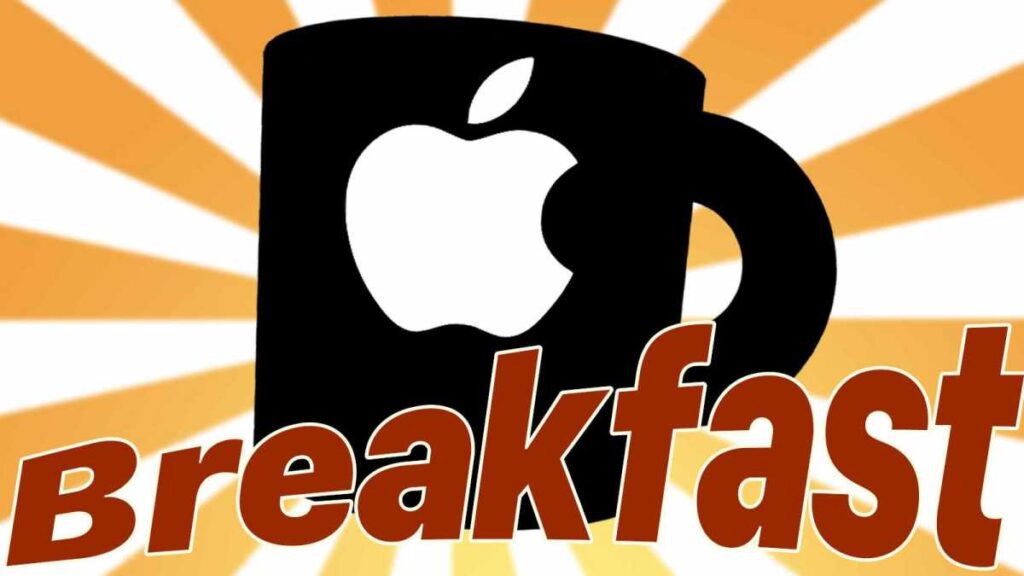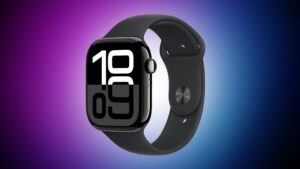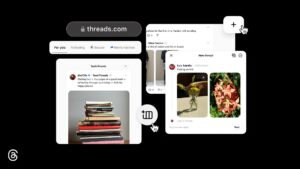Steve Jobs’ vision from 25 years ago makes more sense now than it ever did

Welcome to our weekly Apple Breakfast column, which includes all the Apple news you missed last week in a handy bite-sized roundup. We call it Apple Breakfast because we think it goes great with a Monday morning cup of coffee or tea, but it’s cool if you want to give it a read during lunch or dinner hours too.
Hands on with the future
Trapped as I am on a rainy island in the North Atlantic, I spent the early months of this year watching on enviously while U.S. colleagues plunged into the world of spatial computing. But now that Vision Pro has launched in the U.K., I’ve finally had a chance to try it out for myself. And while I’ll write more about the experience soon, the first thought that struck me was how important Apple’s retail stores are to this launch–far more, in fact, than they ever have been for a previous product release.
The thing about Vision Pro, and this is both the device’s greatest strength and its biggest challenge, is that it’s totally different. Before the iPod came along, we knew in a general sense how to use MP3 players. The iPhone was reminiscent of the familiar iPod, and arrived in a world already flooded with mobile phones as well as smartphone/PDA concepts. AirPods were just wireless EarPods, and the Apple Watch is, well, a smarter watch. But the Vision Pro isn’t like any Apple product we’ve seen before. Yes, it’s a headset, but it’s not really comparable to any of the rival VR and mixed-reality headsets already on the market. Vision Pro is far more ambitious (and expensive) as a universal computing and entertainment platform. Using the product is an experience that’s difficult to imagine, and almost as difficult to describe. You simply have to try it for yourself.
It’s lucky for Apple, then, that the company owns a network of high-end retail outlets across the globe where customers can try out Vision Pro in a controlled environment, one with teams of trained, patient experts, cupboards full of various sizes of strap and light seal, and even a machine that can check your glasses to work out which lenses are needed. Part of the demo process involves having your face scanned to work out which accessories will provide the optimal fit and swap it out if the scan isn’t 100 percent reliable. In my case, the proposed seal was sent away and replaced with something better in a matter of minutes.
Using the headset, meanwhile, is often counterintuitive, at least at first, but a knowledgeable Apple employee able to answer questions and anticipate any difficulties makes it all seem intuitive. Selecting onscreen elements by looking at them and then tapping your finger and thumb together is a little mind-blowing, and you need someone to help. None of this would work if you were trying to buy entirely online and test it out at home.
This all seems normal now: Apple is known for its little oases of glass and pale-wood furniture. But lest we forget, it seemed like a bizarrely illogical move when the first Apple Stores opened back in 2001. At a time of relentless bricks-and-mortar decline, Steve Jobs–not for the first or last time–swam against the tide, deciding to spend more on retail, upgrading from stores-within-a-store to dedicated outlets in expensive locations. With more and more customers buying online, and most companies looking for ways to downsize their physical locations, this seemed not so much insanely great as just… insane. But it proved a masterstroke.
What Jobs understood was the importance of Apple presenting itself as a tribe; and tribes need somewhere to meet and commune. The stores also acted as a gigantic advert for the company’s values, embodied as much by the small details of the furnishings as by the (sometimes unsettling) positivity of the staff. Walk into an Apple Store and you understand what the company is about before you pick up a product.
On the more practical side, Jobs may also have felt that a company selling premium products needs a space where it can demonstrate that they’re worth the extra money… and walk less tech-savvy customers through their operation. We may think iPads are easy to use, but newcomers are more likely to buy one if a kindly expert shows them how they work. The Apple Store concept seems so obvious in retrospect, but it really wasn’t at the time. What we certainly didn’t know in 2001 was that Apple would one day launch a $3,499 product that needs potential customers to be guided through a complex half-hour demo; a product that would have zero chance of success if the Apple Store didn’t exist.
Foundry
Trending: Top stories
Apple is finally ready to unleash the full potential of the iPhone, iPad, and Mac.
Karen Haslam offers 10 ways to protect your Mac from malware and theft.
Installing the iOS 18 public beta? These are the best features to try first.
Apple Pay under investigation in U.K. amid ‘seismic shift’ in consumer behavior.
This incredible case turns your old Apple Watch into a modern-day iPod mini.
It’s not just iPhones: Apple users are holding on to their Macs longer than ever.
Apple drops a surprise HomePod mini update—but it’s not the one we want.
Podcast of the week
The public betas for iOS and iPadOS 18, and macOS Sequoia are coming, and you might be waiting to install them. But is that really a good idea? In this episode of the Macworld Podcast, we talk about why you should and why you should avoid them.
You can catch every episode of the Macworld Podcast on Spotify, Soundcloud, the Podcasts app, or our own site.
Reviews corner
BigBlue SolarPowa 30 review: Tapping into the sun to charge your iPhone.
Abbyy FineReader PDF review: Great for Mac users digitalizing their documents.
The rumor mill
Apple’s secret ingredient for making the iPhone thinner just got delayed to 2026.
First details emerge of next year’s M5 MacBooks.
iPhone 17: Everything we know so far about the 2025 iPhone.
Software updates, bugs, and problems
Massive AT&T data breach exposes records of nearly all its customers’ calls and texts.
And with that, we’re done for this week’s Apple Breakfast. If you’d like to get regular roundups, sign up for our newsletters. You can also follow us on Facebook, Threads, or Twitter for discussion of breaking Apple news stories. See you next Monday, and stay Appley.
Apple Inc, Virtual Reality




